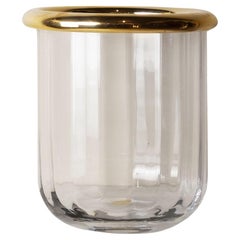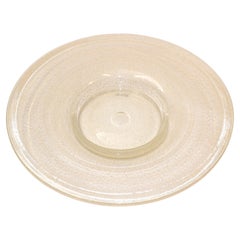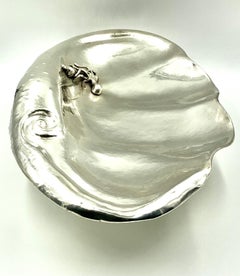Italian Centerpieces
1960s Mid-Century Modern Vintage Italian Centerpieces
Crystal, Brass
1960s Mid-Century Modern Vintage Italian Centerpieces
Ceramic
Late 20th Century Mid-Century Modern Italian Centerpieces
Gold
1940s Art Deco Vintage Italian Centerpieces
Murano Glass
20th Century Mid-Century Modern Italian Centerpieces
Murano Glass, Art Glass
Mid-20th Century Organic Modern Italian Centerpieces
Silver
Mid-20th Century Mid-Century Modern Italian Centerpieces
Murano Glass
1980s Organic Modern Vintage Italian Centerpieces
Blown Glass, Murano Glass, Murrine
1970s Mid-Century Modern Vintage Italian Centerpieces
Ceramic
1930s Art Deco Vintage Italian Centerpieces
Silver, Gold
Mid-20th Century Mid-Century Modern Italian Centerpieces
Art Glass
Mid-20th Century Italian Centerpieces
Stainless Steel
Mid-20th Century Mid-Century Modern Italian Centerpieces
Glass, Murano Glass, Art Glass
1970s Mid-Century Modern Vintage Italian Centerpieces
Glass, Art Glass, Blown Glass, Murano Glass
1930s Art Deco Vintage Italian Centerpieces
Murano Glass
Mid-20th Century Mid-Century Modern Italian Centerpieces
Murano Glass
1970s Mid-Century Modern Vintage Italian Centerpieces
Metal, Brass
1970s Mid-Century Modern Vintage Italian Centerpieces
Acrylic, Lucite, Plexiglass
1950s Mid-Century Modern Vintage Italian Centerpieces
Mid-20th Century Mid-Century Modern Italian Centerpieces
Glass, Blown Glass
Mid-20th Century Mid-Century Modern Italian Centerpieces
Murano Glass
1940s Art Deco Vintage Italian Centerpieces
Gold
1970s Mid-Century Modern Vintage Italian Centerpieces
Ceramic
Mid-20th Century Mid-Century Modern Italian Centerpieces
Ceramic
Mid-20th Century Mid-Century Modern Italian Centerpieces
Glass, Art Glass, Sommerso, Murano Glass, Blown Glass
1960s Mid-Century Modern Vintage Italian Centerpieces
Crystal
Mid-20th Century Mid-Century Modern Italian Centerpieces
Brass
1970s Mid-Century Modern Vintage Italian Centerpieces
Travertine
1950s Space Age Vintage Italian Centerpieces
Murano Glass
1960s Mid-Century Modern Vintage Italian Centerpieces
Metal
Mid-20th Century Mid-Century Modern Italian Centerpieces
Blown Glass, Murano Glass
1960s Vintage Italian Centerpieces
Art Glass, Murano Glass
Mid-20th Century Mid-Century Modern Italian Centerpieces
Glass, Art Glass, Ribbon, Murano Glass, Blown Glass
Late 20th Century Mid-Century Modern Italian Centerpieces
Murano Glass
1980s Post-Modern Vintage Italian Centerpieces
Silver Plate
20th Century Italian Centerpieces
Ceramic
1930s Art Deco Vintage Italian Centerpieces
Murano Glass
Mid-20th Century Mid-Century Modern Italian Centerpieces
Glass, Sommerso, Murano Glass, Blown Glass, Art Glass
1950s Space Age Vintage Italian Centerpieces
Murano Glass
1930s Art Deco Vintage Italian Centerpieces
Murano Glass
Late 20th Century Mid-Century Modern Italian Centerpieces
Blown Glass, Murano Glass
20th Century Victorian Italian Centerpieces
Majolica
1920s Art Deco Vintage Italian Centerpieces
Murano Glass
1920s Art Deco Vintage Italian Centerpieces
Murano Glass
1970s Mid-Century Modern Vintage Italian Centerpieces
Metal, Brass
1960s Mid-Century Modern Vintage Italian Centerpieces
Murano Glass
1960s Other Vintage Italian Centerpieces
Murano Glass
1970s Mid-Century Modern Vintage Italian Centerpieces
Travertine, Marble
1980s Modern Vintage Italian Centerpieces
Malachite, Silver
20th Century Mid-Century Modern Italian Centerpieces
Art Glass, Blown Glass, Murano Glass, Sommerso, Glass
Late 20th Century Art Deco Italian Centerpieces
Crystal
1930s Art Deco Vintage Italian Centerpieces
Murano Glass
1940s Art Deco Vintage Italian Centerpieces
Murano Glass
Mid-20th Century Italian Centerpieces
Murano Glass
20th Century Mid-Century Modern Italian Centerpieces
Blown Glass
Mid-20th Century Mid-Century Modern Italian Centerpieces
Glass, Murano Glass, Blown Glass, Art Glass
1960s Mid-Century Modern Vintage Italian Centerpieces
Ceramic, Faience, Glass
Mid-20th Century Mid-Century Modern Italian Centerpieces
Acrylic, Plexiglass




